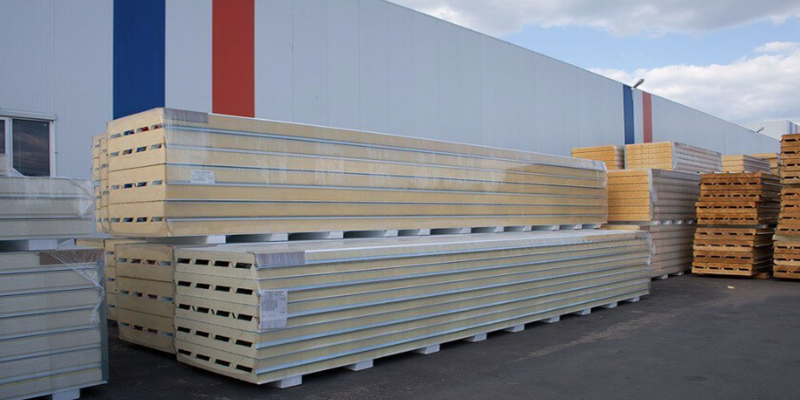Polyurethane sandwich panels, commonly known as PU panels, are widely used components in modern construction and industry due to their strength, durability and thermal insulation properties. The panels are made up of three main layers: a polyurethane foam core that is highly insulating and sandwiched between two sturdy metal sheets. This composite structure has excellent structural stability, insulation and weather resistance, making it ideal for a variety of environments. Polyurethane catalysts in the production of these panels ensure efficient fabrication and performance of foam cores.
What is a Sandwich Panel?
A sandwich panel is a type of construction material that combines a polyurethane foam core with outer layers, usually metal, to create a high-performance composite material. The foam core, created through a chemical reaction catalyzed by polyurethane catalysts, provides excellent insulation, helping maintain stable internal temperatures in buildings and equipment. The outer metal layers add structural rigidity, protection, and durability. This combination offers a lightweight yet durable solution for walls, roofs, cold storage, and other applications where energy efficiency, weight, and strength are essential.
Role of Polyurethane Catalysts in Sandwich Panels
Polyurethane catalysts are crucial in producing the foam core of sandwich panels. Catalysts like MXC-T and MXC-C15, each with distinct properties, accelerate the reactions between polyols and isocyanates, leading to foam formation with the desired density and structure.
1.MXC-T is primarily used in the production of polyether-based soft foam, molded foam, semi-rigid foam, and rigid foam. In sandwich panels, MXC-T helps in controlling the foam’s structure, providing a balanced reaction rate and a consistent cell structure. This consistency ensures uniform thermal insulation and enhances the structural integrity of the panel.
2.MXC-C15, an amine catalyst, is particularly suitable for soft and semi-soft molding as well as hard foam applications. In sandwich panels, it contributes to achieving a stable foam structure that maintains its insulating properties under various temperatures. MXC-C15’s control over the reaction helps in achieving ideal foam density and dimensional stability, making the panels more resistant to deformation and environmental stress.
Applications of PU Sandwich Panels
Polyurethane sandwich panels are widely used in cold storage facilities, industrial buildings, commercial buildings, and refrigerated transportation, where maintaining temperature control is critical. Polyurethane sandwich panels are lightweight, faster to install, less structural load, and resistant to extreme weather conditions for longer service life. The use of dedicated polyurethane catalysts in the production process enhances these properties, making polyurethane sandwich panels a wide choice for energy efficient, durable building solutions.
In summary, the combination of polyurethane foam with high-performance catalysts such as MXC-T and MXC-C15 produces sandwich panels with excellent insulation, strength and weather resistance, supporting sustainable and efficient construction practices.
Post time: Oct-30-2024

